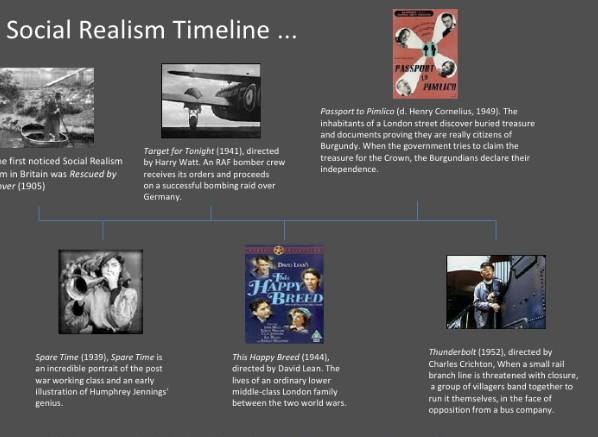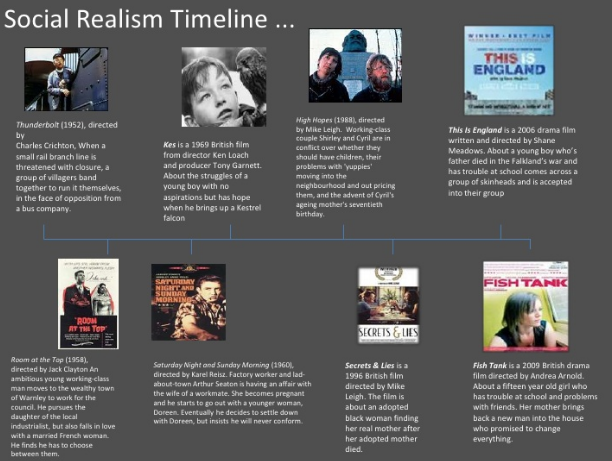I, Daniel Blake: Social Realism
- Mar 4, 2019
- 5 min read

Social realism is a genre which aims to give the audience a true indication of what life is like. These films often aim to raise attention to social and political issues which the director feels are poignant. Styles and aesthetics have evolved within this genre, yet the overall aim has remained which is to centre the film around themes and ideologies. These films have been a staple in British culture for many years.
British filmmaker Danny Boyle is one of the most prominent directors within the genre, having made social realism films such as Trainspotting (and its sequel film Trainspotting 2) and This is England (as well as its spinoff show by the same name). With a decade between these two films, it is clear to see that the visual style of the film has adapted, yet Boyle's ideologies have remained. The
The main stylistic difference between Trainspotting and This Is England is the positioning of the audience; Renton narrates a lot of Trainspotting for the audience in order to explain his point of view (most likely as a way to make the audience align with him) whereas we are more omniscient in This Is England and follow it from a child's (Shaun's) perspective. I feel that despite the difference in audience positioning, it is clear to see that social realism films aim to position us in a way in which we learn and grow with the protagonists; we are able to hear Renton's thoughts and motivations, so we understand why he does certain things or how he is feeling at certain times, in order to align with him and take a preferred reading of the film. In This Is England, we learn about the world with Shaun; we see the reasons why people become white extremists or had reservations towards other cultures, whilst being fairly unbiased as Shaun is uneducated on the matter and (more importantly) is naive to this world as a whole. This shows how Social Realism films aim to break down preconceptions about issues and reshape them into a preferred reading, one which aligns with the directors ideologies.
Common themes, therefore, of social realism films are groups or issues which are looked at to be 'the other' by hegamonic / dominant ideological groups within society. Whilst the films don't justify the crime or discrimination caused by these subjects or issues, they do try to show us what leads those within the minority groups to this point in order to raise awareness and provide social commentary to encourage action. Boyle doesn't try to promote heroin use or crime in Trainspotting, but instead shows us what it can be like to be an addict (eg Renton, SickBoy and Spud) but also what can lead people to drug addiction (Tommy).
Unknown actors are another convention of social realism films, at the time of each respective films making, Mcgregor and Turgoose were fairly unknown. This is commonly done to elevate the ideological messages of the film, as it strips the film of 'star power' and focuses the audience on the character's journey and the issues being raised. This is most likely why T2 was less successful at the box office, as the iconography of the first film coupled with McGregor's celebrity status due to the success of the first film (and others- even if the Star Wars sequels were dreadful, but that's another blog post in itself). These films also use actors who are fairly young, as the target audience tends to be teens and young adults; again this raises more awareness to the issue due to the fact that the target audience are considered to be more socially aware and naive to certain subjects. They do not have many preconceptions and the age they are at is sort of a transient period in which these groups begin to form their own opinions, ideologies and feelings on social issues.
Found footage is another common use of social realism films (mainly in trailers) as it shows the area or time period being covered in the film; this grounds the spectator in the reality of the film and highlights the severity of the subjects. The trailer for This Is England uses archival footage of 1980's Britain to depict the social divide at the time which the film covers; this adds the element of 'realism' to the film as it shows that these events actually happened, and therefore drives home the ideologies embedded.
Production companies commonly involved / who often collaborate with social realism films are:
The Crown Film Unit - although it was disbanded in 1952, the Crown Film unit was an early collaborator with social realist filmmakers. It was a branch of the government's information department, and aimed to help make films for the general British public as well as an international audience.
Woodfall- This production company helped to popularise the use of real locations within films in order to add to the narrative and ideologies embedded in social realist films, some of their notable work includes Ken Loach's 'Kes'.
Film 4- Despite starting it's life as an independent branch of the Public Broadcasting Service, Film 4 was integrated into Channel 4's drama department in 2002 due to lack of funding. Again, this company aims to provide opportunities for independent filmmakers and focuses heavily on social realist films as part of it's remit and ethos which is to bring awareness to minority groups or subjects within British society and culture.

The low budget of social realist films leaves something to be admired; with a small budget of just £2.5 million (which is really not a lot in terms of film), Trainspotting was filmed in the summer of 1995 over 7 weeks. Boyle and his crew filmed the majority of the film in an abandoned cigarette factory, building and dismantling sets in the space everyday due to lack of a large studio or access to large locations. Their small budget also meant that they had little access to CGI equipment, green screens, etc. which meant that the production team had to become more creative when it came to visual effects; an example of this is the scene where Renton falls into the toilet and finds himself in a large open space of water. The toilet was placed on a platform which had a trap door underneath which McGregor was dragged into. I feel that this shows how social realism films are more focused on substance over style, as the filmmakers and crew are able to make some of the most iconic, high grossing films of our time with such a small budget and limited amenities.
Overall, the aim of social realism is clear; to make films which bring awareness to issues within society and to give an insight into what it can be like to be a part of groups which society often looks down on or sees as 'the other'. Filmmakers don't need a star-studded cast or a large budget, just a solid idea with clear ideologies, and a creative thought process to overcome obstacles presented by the lack of large budget.








Comments